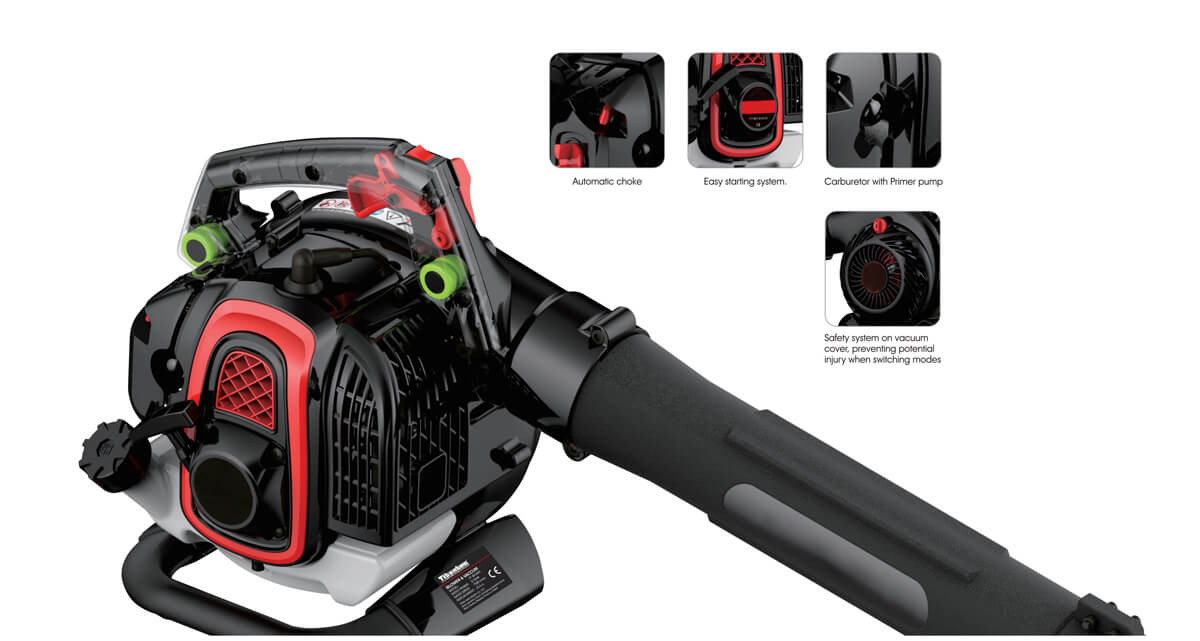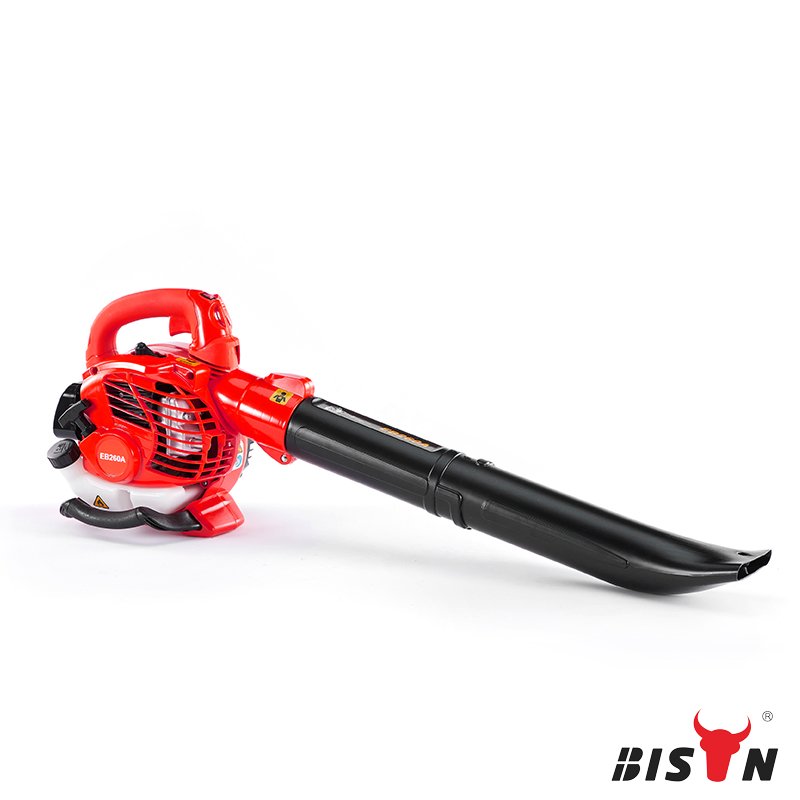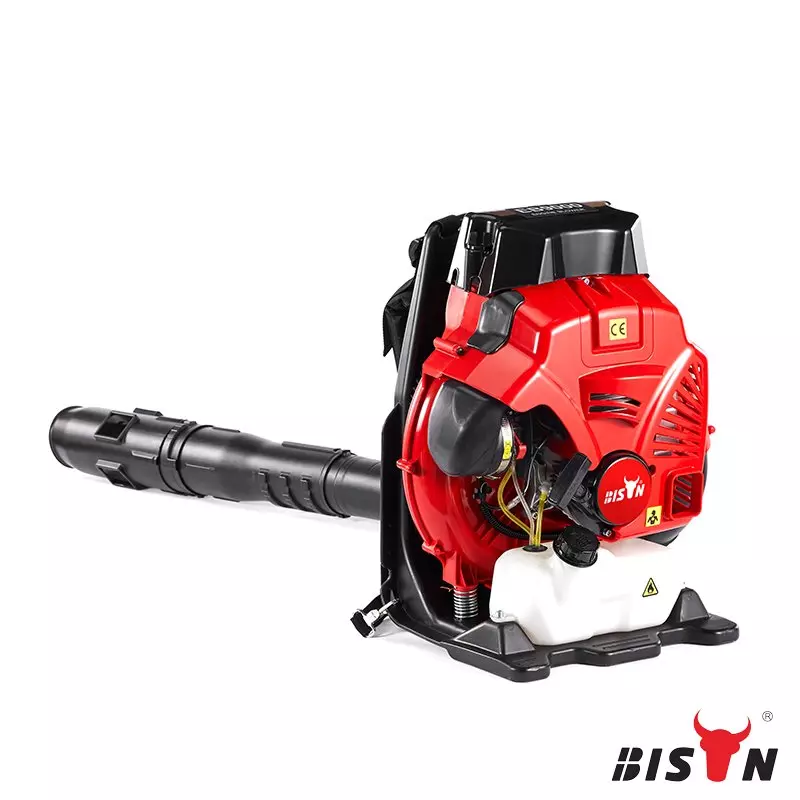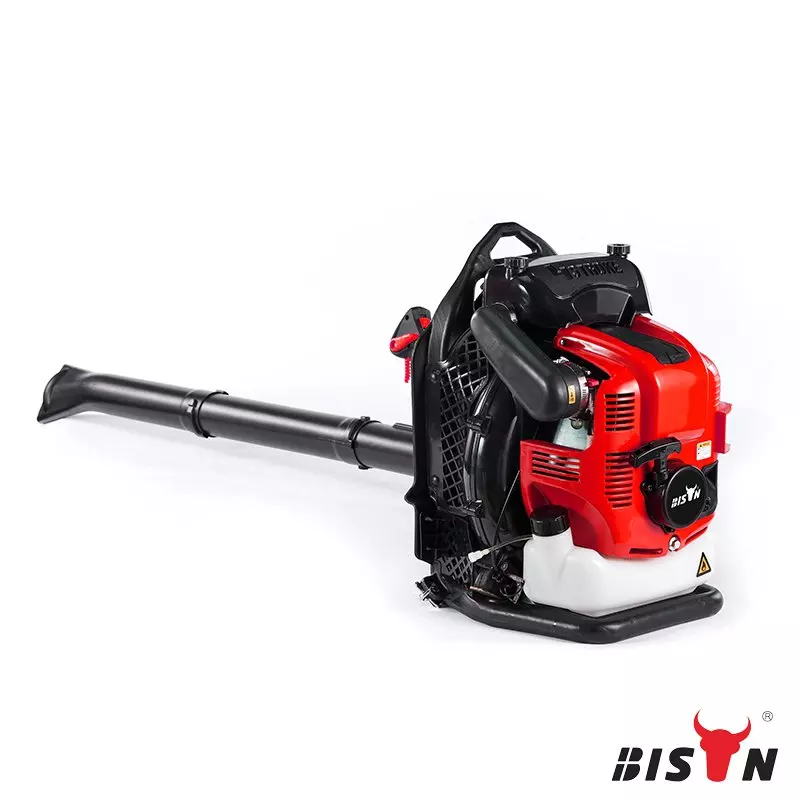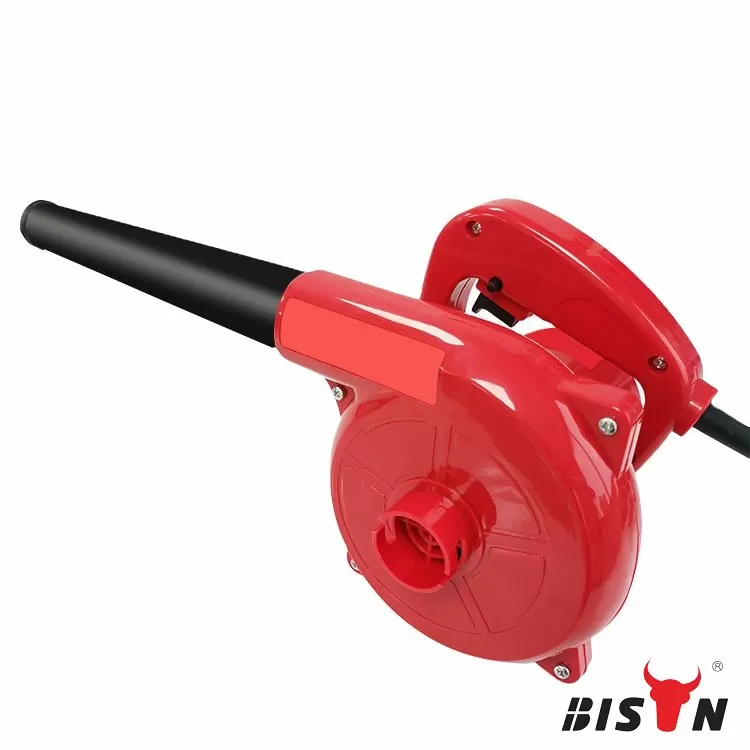leaf blower won't start (reasons & solutions)
2025-05-19
Table of content
Homeowners with yards love leaf blowers and cleaning fallen leaves to keep them amenable. The convenience of having a leaf blower can quickly turn into a hassle if you attempt to start it and it refuses to turn on. When this happens, some people throw away the leaf blower, while others take their broken machine to a mechanic. But most of the time, the reason your leaf blower won't start can be easily fixed at home without needing professional help.
So, why does the leaf blower won't start? In this comprehensive guide, BISON will walk you through the most common reasons why leaf blowers fail to start and provide clear, actionable troubleshooting steps to identify and resolve these issues.
By following our systematic approach, you'll not only solve your immediate problem but also gain valuable maintenance knowledge to prevent future starting issues and extend the life of your equipment.
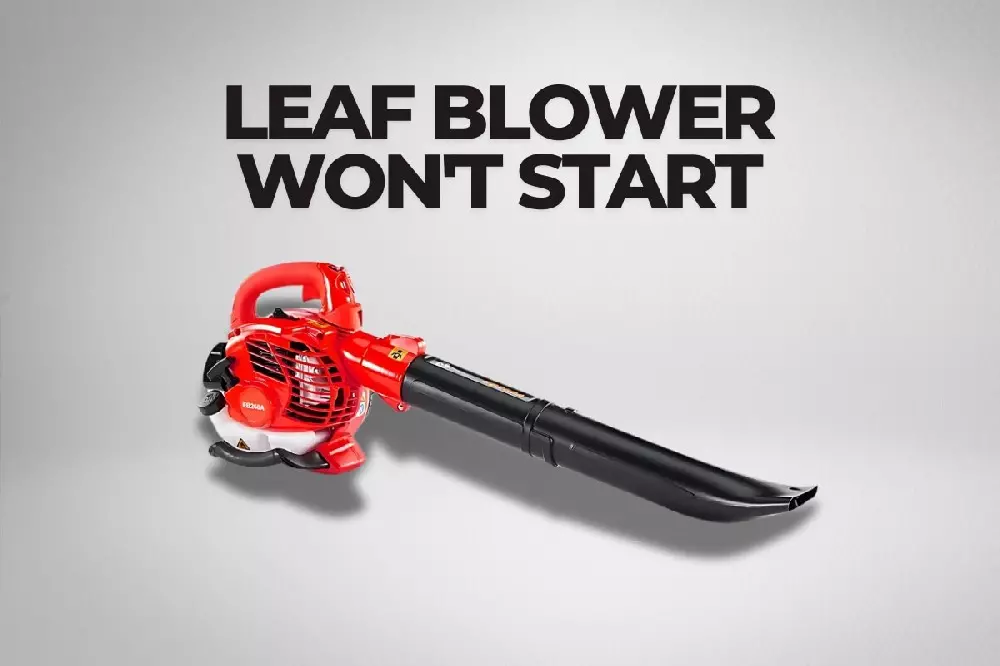
Troubleshooting steps for a non-starting leaf blower
Many things can go wrong because leaf blowers require an electric motor or engine to generate airflow. When your leaf blower refuses to start, a systematic approach to troubleshooting will help you identify and resolve the issue efficiently. Below is a comprehensive guide that progresses from basic checks to more advanced diagnostic procedures.
Fuel-related problems
Start with the most basic checks—fuel problems are one of the most common reasons leaf blowers and other small engines fail to start.
Bad fuel
Gasoline will begin to degrade within 30 days, especially if it contains ethanol. This causes sticky deposits to clog fuel passages, ethanol to separate to form a water-bearing layer, and reduced ignition properties. If your leaf blower has not been used for more than a month and there is fuel in the tank, it is likely due to bad fuel. The solution is to completely drain the old fuel and refill it with fresh gasoline.
Improper fuel mixing
For two-stroke engines, always mix the oil and gasoline in the proper ratio according to the manufacturer's specifications. Two-stroke engines require a precise oil-to-gas ratio (usually 40:1 or 50:1). Using the wrong mixture can cause clogged spark plugs, excessive smoke, carbon deposits, or engine damage. Always check your owner's manual and mix the fuel accurately.
Empty fuel tank
It's easy to overlook an empty tank due to tipping or fuel not reaching the fuel suction line. Always check the oil level before getting into complex troubleshooting. Remove the fuel cap and visually inspect the tank. If the level is low, add fresh gasoline.
Fuel quality
Fuel with more than 10% ethanol can damage small engines, so use the proper fuel for your outdoor power equipment.
Check the fuel lines and filters
Over time, fuel lines can become clogged with debris, dirt, or the sticky residue of old fuel. A clogged fuel filter or fuel line can prevent fuel from reaching the carburetor. Check the fuel line for cracks, kinks, or hardening, and replace as needed. The fuel filter is usually located inside the fuel tank and is used to filter out debris before the fuel reaches the carburetor. Dirty fuel can clog the filter and prevent the leaf blower from starting.
Fortunately, it's easy to change or clean the fuel filter. Follow these steps:
Step 1: remove the fuel lines. Carefully pour the fuel in the tank into a safe container away from flames. You may need to remove the fuel filter to access the fuel lines. Take photos before removing the fuel line so you can reassemble it.
Step 2: Find the fuel filter. Use a flashlight to find the fuel filter. It's connected to the main fuel line you removed.
Step 3: Clean or replace the filter. Remove the fuel filter with pliers. Clean with gasoline and a soft-bristled toothbrush or replace with a new filter.
Step 4: Reconnect the fuel line. Reconnect the fuel line and secure it. If the air filter was removed, reinstall it.
Bad recoil starter
A recoil or pull starter is used to start gas-powered leaf blowers. It has a rope and pulley mechanism that turns the engine. If something goes wrong with the recoil starter, it might be impossible to start the leaf blower. Common recoil starter problems that prevent starting include:
Damaged or tangled pull cord
The pull cord is the wire you pull to turn the engine. Over time, it can break or become tangled inside the starter housing, making it hard or impossible to pull. If you notice the pull cord is stiff or won’t pull at all, it may be damaged or tangled.Before beginning, remove the spark plug wire. You can replace a broken or tangled pull cord by following these steps:
Step 1: Locate the recoil starter assembly (check your user manual for exact location).
Step 2: Use pliers to untangle and remove the damaged pull cord and detach it from the pull handle.
Step 3: Insert the new pull cord into the pulley hole and tie a knot to secure it.
Step 4: Wind the new cord in the same direction as the old one so that it points toward the hole when fully wound.
Step 5: Pass the cord through the hole in the starter housing and attach the pull handle before reassembling the blower.
The spring or pulley is damaged
If the pull cord is stuck in the pulled position and won’t retract, the pulley may be jammed or the spring worn out. Replacing the entire starter assembly fixes this issue:
Step 1: Remove the leaf blower housing.
Step 2: Open the pulley to relieve spring tension, preventing the spring from snapping out.
Step 3: Loosen the screw holding the pulley, flip the housing so the recoil assembly points down, and gently tap it to remove the old assembly with the spring. (This avoids injury from the spring snapping out.)
Step 4: Install the new recoil starter assembly, ensuring the spring fits properly. Tighten the screw, then wind and release the pulley several times to check the spring’s function. Make sure the cord is attached before winding and inserting it through the housing hole.
Step 5: Secure the starter assembly housing back on the leaf blower and test the pull cord.
Bad spark plug
The spark plug is crucial for ignition, and issues here directly affect starting capability. Spark plug problems
Dirt buildup and carbon deposits: If the spark plug surface is carbonized or dirty, it will not produce sparks. This may be caused by the fuel mixture being too rich or the two-stroke mixture not matching. Clean the spark plug with a wire brush or replace it if heavily fouled.
Physical damage: Check for cracked porcelain insulators, corroded, burned, or melted electrodes. Any physical damage compromise's function and requires replacement.
Incorrect gap spacing: The gap between electrodes must meet manufacturer specifications. Too wide causes weak sparks; too narrow causes poor combustion. Use a spark plug gap tool to measure and adjust the gap.
Loose connections: A loose spark plug, or disconnected spark plug wire prevents the electrical current from creating a spark. Ensure the spark plug is tightened properly and the wire connection is secure.
Solution
You will need a spark plug socket with a rubber insert to protect the plug body during removal. Ensure the socket fits your leaf blower’s spark plug.
Step 1: remove the engine cover. You may need to remove the engine cover, but in most leaf blowers, the spark plug can be accessed without removing it.
Step 2: extract the spark plug wire. Gently pull back or twist the boot to disconnect it from the spark plug.
Step 3: Loosen the spark plug. Use the spark plug socket and wrench to turn counterclockwise. Clean light deposits with a wire brush or replace it if worn or damaged. Take the old plug to a small engine store to get the correct replacement.
Step 4: Install the new spark plug. Insert it into the hole and turn clockwise by hand until seated. Then use the socket wrench to tighten securely without overtightening. Correct electrode gap per manual.
Step 5: Reconnect the boot. Reconnect the boot to the spark plug and test the leaf blower to ensure proper operation.
Clogged or damaged carburetor
The carburetor is the heart of your leaf blower, it mixes fuel and air in the proper ratio for combustion, making it crucial for starting and operation. Carburetor problems:
Dirt buildup and varnish: Dirt accumulation or varnish from old fuel is the most common issue. Sticky residue prevents moving parts from functioning, blocks small passages and jets, and can cause float valves to stick.
Clogged jets: Clogged jets prevent proper fuel atomization. They can sometimes be cleared with compressed air or a thin wire but often require thorough cleaning or replacement.
Improper adjustment: Some models have adjustment screws. Improper settings cause problems: too rich floods the engine and wets the spark plug, too lean provides insufficient fuel.
Damaged diaphragms or gaskets: Diaphragm pumps can crack or harden with age, causing fuel pumping failure or air leaks. Torn diaphragms cannot respond to pressure changes. These parts usually need replacement, often via a rebuild kit or full carburetor replacement.
If the carburetor shows visible damage, replacing it is recommended. If it looks intact, you can clean it with carb cleaner.
Clogged or damaged air filter
Proper airflow is essential for combustion in any engine, making the air filter a critical component.
Clogged filter: Air filters capture dust, grass clippings, and debris to prevent engine damage. Over time, they become clogged, restricting airflow and causing difficulty starting, poor performance, and increased fuel consumption.
Damage or deterioration: Torn, crumbling, or oil-soaked filters cannot function properly. Check for tears, holes, edge deterioration, excessive oil saturation, or frame damage that allows unfiltered air to bypass the filter.
Improper installation: An improperly seated filter can allow unfiltered air into the engine or restrict airflow completely. Ensure correct orientation, proper seating in the housing, and secure with retaining clips or fasteners.
Regularly checking and replacing the air filter is essential maintenance. If you haven’t changed it in a while, follow these steps:
Step 1: Remove the air filter housing: Locate the air filter, usually behind a cover secured by screws or clips. Most housings have plastic screws that turn counterclockwise. Remove the cover carefully and set it aside.
Step 2: Remove the air filter: Pull out the air filter located beneath the cover. Tap gently to remove loose debris. Foam filters can be washed with warm, soapy water, rinsed thoroughly, and dried completely before reinstalling. Paper filters should be replaced if they are dirty. Never reinstall a wet filter as it blocks airflow.
Step 3: Attach the new air filter: Place the new air filter into the housing and then replace the cover.
Step 4: Secure the fasteners: Tighten the plastic screws to secure the cover, but avoid over-tightening to prevent breaking the screws, which are often hard to replace.
at last
A leaf blower is a straightforward machine that makes it easy for owners to repair at home. If the leaf blower fails to turn on, you can refer to the reasons listed above and check each one to identify the root cause of the problem.
All the fixes we've provided in this article are cheap and easy, and you don't need any special tools. Remember that the replacement parts you are putting into your leaf blower are the same ones you removed from it. Installing the wrong part will cause fitting issues and can waste valuable time and money.
Safety must remain paramount throughout any troubleshooting or maintenance procedure. Always disconnect the spark plug before performing maintenance to prevent accidental starting. Work in well-ventilated areas when handling fuel and chemicals. Wear appropriate safety gear including gloves and eye protection when working with tools and engine components. Allow the engine to cool completely before servicing to prevent burns.
As a professional manufacturer with years of experience in leaf blower design and engineering, BISON strongly encourages you to take a proactive approach to equipment care. Don't wait until your leaf blower fails to start before thinking about maintenance. Instead, build regular inspection and service into your routine, addressing small issues before they develop into significant problems.
